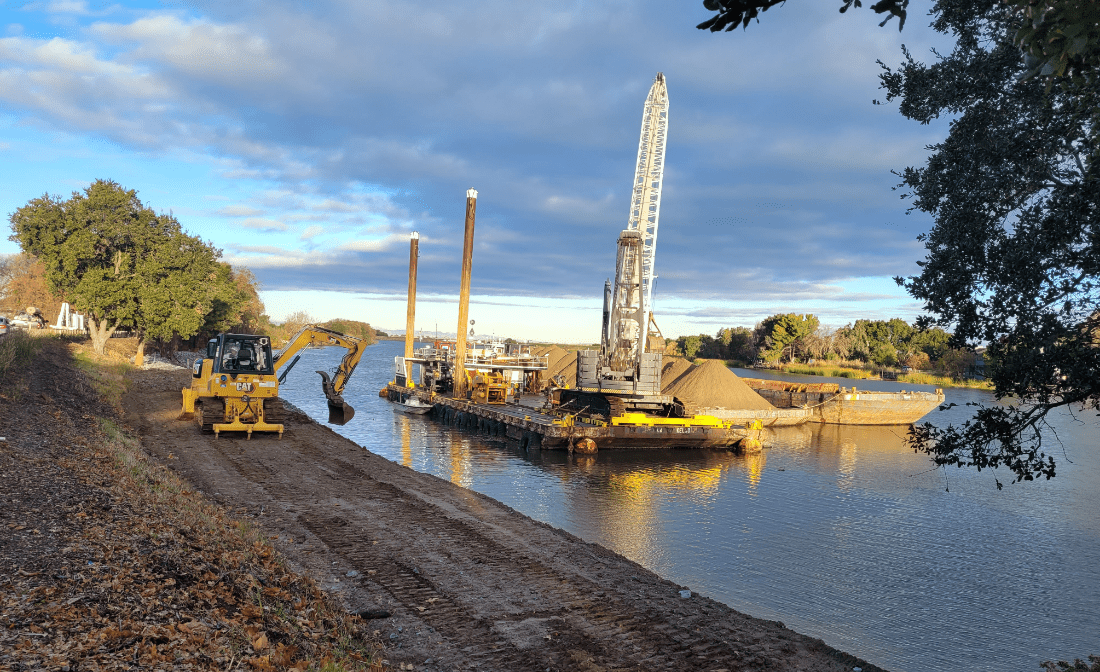The Sacramento River Erosion Control and Habitat Enhancement Project, led by the Brannan-Andrus Levee Maintenance District (BALMD), aimed to bolster flood protection and preserve wildlife habitats along the Sacramento River. This ambitious endeavor encompassed repairing and upgrading levees from Isleton to the mouth of the Sacramento River, covering 7,200 lineal feet along Highway 160.
The Dutra Group, chosen for the project, faced numerous challenges, including incorporating new environmentally friendly design elements and navigating water-only access to the project site due to its adjacency to the river. To overcome these hurdles, Dutra deployed three barges equipped with specialized equipment and a tugboat for material transport.
The construction process involved extensive groundwork, including tree trimming and grubbing, followed by the meticulous placement of quarry stone and materials on the levee slope. Wetland and riparian benches were integrated into the riprap, along with a novel stacked sandbag wall system designed to enhance stability and foster vegetation growth.
Despite these challenges, the project progressed steadily, with the construction team demonstrating adaptability and innovation in implementing the multifaceted design plan. Upon completion, the project promises not only improved flood protection but also enhanced wildlife habitats, garnering positive feedback from the community and garnering interest from regulatory agencies like the US Army Corps of Engineers and the Department of Water Resources.
Multi-level Design: Implementing a new, multi-layered levee design with environmentally friendly elements like stacked sandbag retaining walls presented a construction hurdle for the crew.
Limited Access: The levee’s location directly next to the Sacramento River restricted access to the work site. Traditional land-based construction equipment couldn’t be used, necessitating a creative solution with barges.
The Brannan-Andrus Levee Maintenance District (BALMD) delivered an ambitious project that transformed a 7,200-foot stretch of the Sacramento River. Working with contractor Dutra Group, the team meticulously placed quarry stone, created lush wetland and riparian benches, and installed a novel stacked sandbag wall system – all strategically designed to both fortify the levees and enhance the river’s ecology.
The Brannan-Andrus Levee Maintenance District (BALMD) proposed the Sacramento River Erosion Control and Habitat Enhancement Project to address erosion issues on the left bank of the Sacramento River, on Brannan Island. The primary objectives were to provide suitable levee erosion control, create fish-friendly habitats, and reduce long-term maintenance costs.
Specifically, the project aimed to control erosion on approximately 1.2 nautical miles of levee, establish wetland and riparian benches along the river channel, and repair existing areas of erosion using stable and effective methodologies. The work was carried out across three designated sites, covering a total of 7,200 linear feet.
The scope of the project included comprehensive site assessments, development of detailed erosion control plans, construction of revetment protection structures, creation of wetland and riparian benches, and post-construction monitoring to evaluate the effectiveness of the implemented measures.

